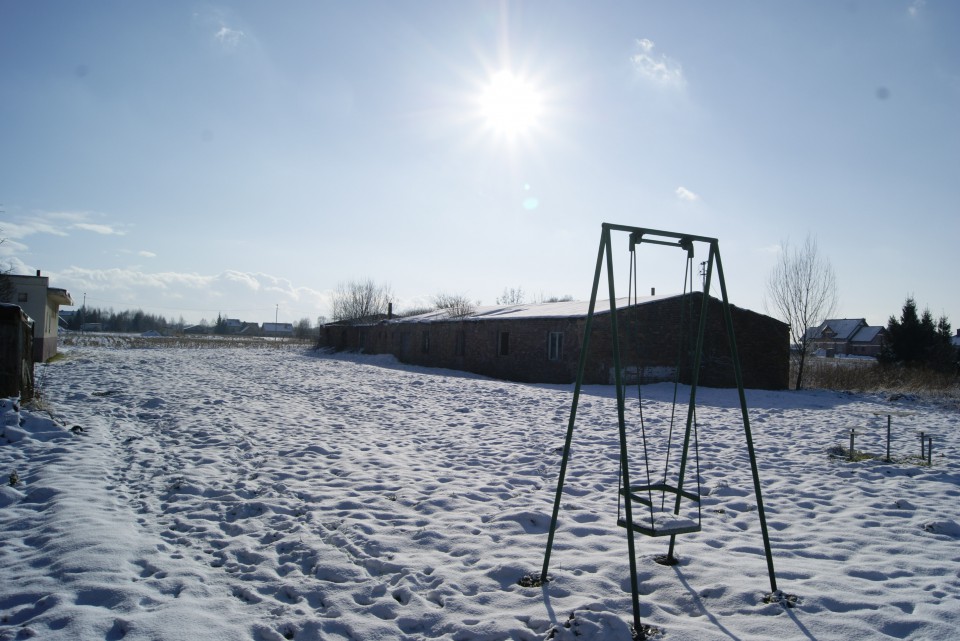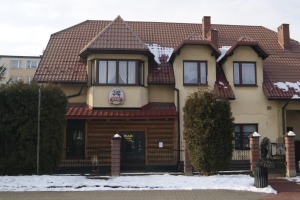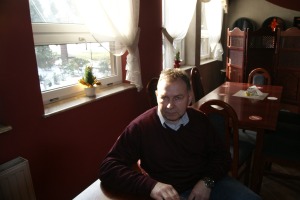In Bar Orchidea, a few old men stare at the dust twinkling in the afternoon light. Most of them would stand up every half an hour to order another Warka, a Polish beer. In the meantime, the world is very much alive on the tv that is permanently playing in the corner, but on which only half an eye is directed. Bar Orchidea is the perfect place to lose time.
We are meeting its owner: Henryk Grzybek. Grzybek is an engaged person in Oswiecim’s political life. He used to be a member of the town council for a few years, and was a presidency candidate in Oswiecim’s last elections in November 2014 (obtaining 3 percent of the votes). Asking him about the current state of living in Oswiecim, Grzybek started listing the town’s problems and the frustrations of its inhabitants.
‘If this place is so important for the whole world, then building a bridge and a ringroad, which would cost maybe 500 million Polish zlotys (125 million euros) -the Polish state would not go bankrupt-, is not so hard’, Grzybek sets off explaining the city’s road infrastructure problem. The different districts of Oswiecim are separated by the Soła river. The two bridges crossing the river direct bypassing traffic straight into the town’s center causing large traffic jams. A ringroad and a third bridge would solve the issue, but then this bridge and ringroad would be built close to the Auschwitz museum, disturbing the museum’s ‘peace’.
When there is an important personality visiting Auschwitz, the traffic gets even worse: ‘If there would be a ringroad, the inhabitants will not eternally suffer from having the roads closed. The inhabitants are tired with this kind of life, every time there is someone coming here there are always obstructions on the roads’, Grzybek complains. According to Grzybek, these road problems also keep tourists away from the town: ‘It takes them an hour to go from the camp to the town, so they rather go straight to Krakow’, he says with a sense of exaggeration.
Asking Grzybek on the impact of bad infrastructure on the town’s economy, he sketches a dark image: ‘In Oswiecim there have been a lot of businesses and factories, tobacco industry, tanneries, creamery; and at present there is nothing, apart from that one large chemical factory. So people have no jobs in Oswiecim. Oswiecim’s population was 45,000 in the early eighties, now it is 39,000. That tells you everything’, he finishes his depressing tale.
We checked the numbers Grzybek mentioned with the current municipality government, which confirmed the numbers but added that the population in neighbouring villages has increased. This would, according to the municipality government, be a sign of middle class formation: people build their houses outside of the center, to have more space for living.
The municipality government admitted the trouble finding a concrete plan and budget for the ringroad. But apart from the ringroad and bridge, the government informed us about another bridge project in which a lot of time and money will be invested: an artwork bridge connecting the Auschwitz museum and the center of Oswiecim, making it attractive for tourists to go to the town’s center from the Auschwitz museum. The city is currently applying for grants to build this bridge. With the strong local demand for a ringroad and bridge for cars, building this new pedestrian bridge divides the community as it perceived by some as yet another Auschwitz memorial.


